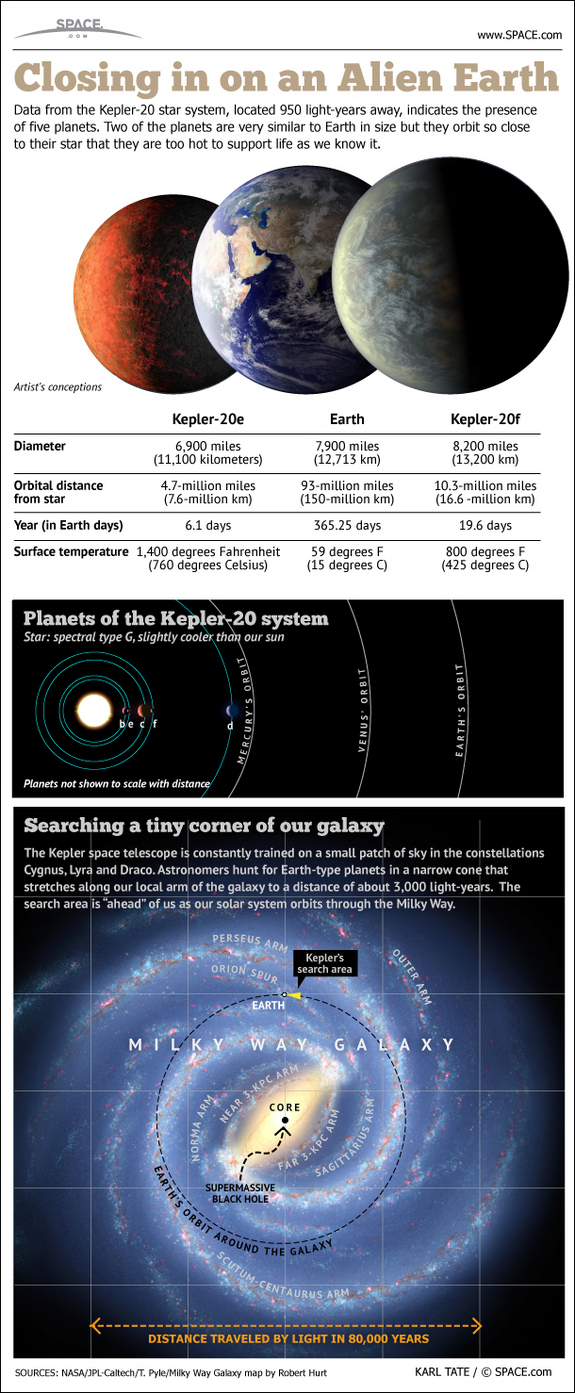You see, the Kepler team requires three transits (when the planet passes in front of the star, causing a dip in the light, which is how Kepler finds planets) in order to confirm a candidate as a planet. Which means that if there are any planets kinda like Earth out there, now is about the earliest we would be expecting to start seeing them. Of course, we would have to be able to detect a planet similar in size to Earth orbiting a similar star (the ultimate hope of this planet hunting game is to find a planet that isn't just similar (Small, rocky, and in the habitable zone) but a mirror image of Earth (Same size, density, star type, habitable zone, etc). From the dip in the light curve of a star that is produced by a planet transiting it we can determine orbital period (time between transits), size (how much light gets blocked), and from this we can estimate mass**, density, and from that composition etc. Which means that in order to find a mirror Earth we have to find a planet similar in size around another star. Which we have just done!
Which is exciting yes, but a more ordinary form of exciting. This was always known about the Kepler mission, that it would take awhile to start finding small, rocky planets similar to our own. We knew that to find a mirror Earth we would have to wait about three years. So while it's exciting to be at this particular cusp of history, it's not unexpected. What is exciting is found in this infographic I stole from space.com.

Source:LiveScience
You see that teeny weeny little yellow triangle in the bottom graphic? Yeah, that's Kepler's search area. That miniscule blip on our galactic neighborhood is all that Kepler is looking at. And it has returned thousands of candidates, adding potentially hundreds of new planets to our understanding of the cosmos. And it has just proven that it is indeed capable of finding the elusive mirror Earth. From what, like one tenth of one percent of the galaxy? That's what's so exciting to me. This is by no measure a comprehensive catalogue of galactic planets. It's not even a full sweep of the immediate neighborhood. This is standing on the porch and counting the number of houses until the end of the block.
We have so much more left to discover!
*I couldn't think of a title, so I went with In Flames.
** A different technique is used which measures the gravitational tug on a star by a planet to determine it's mass. But this technique only works for planets massive enough to noticeably move their parent star. In this case, we know that these planets have a maximum mass [they aren't moving their star around], we know what their orbital period is, and we have a good idea of the size. From these three things we can get a rough estimate of their mass. I didn't figure this out until after I posted the article. I should know by now that I should read Bad Astronomy to get my facts straight.
